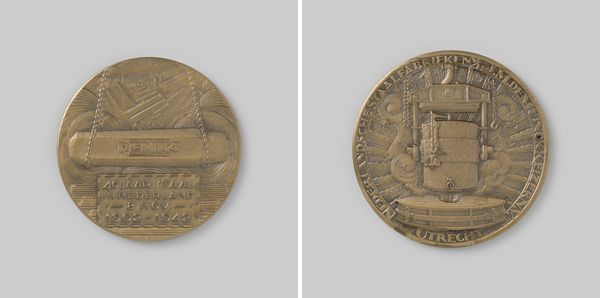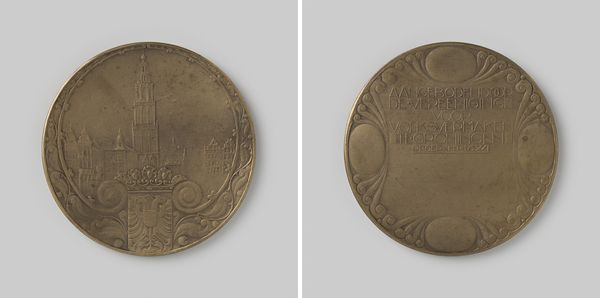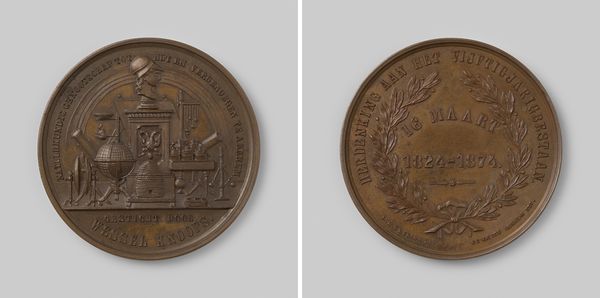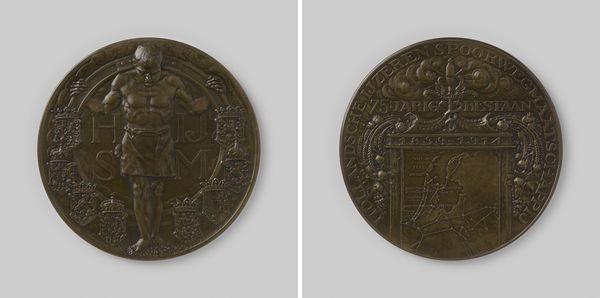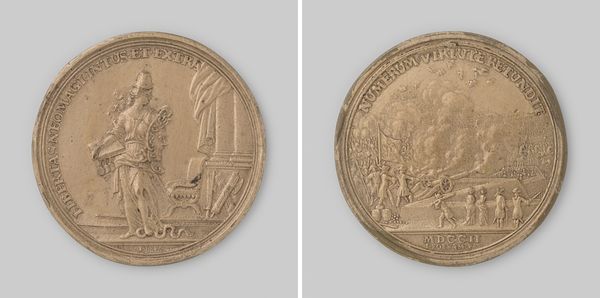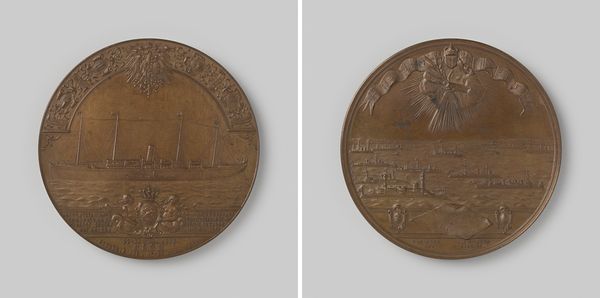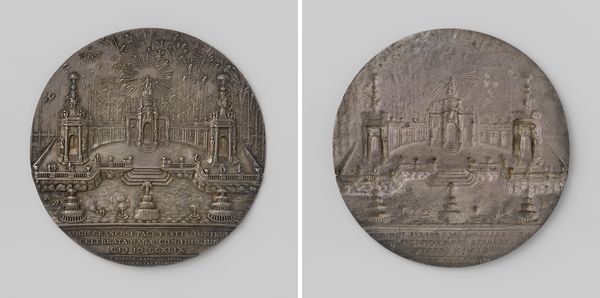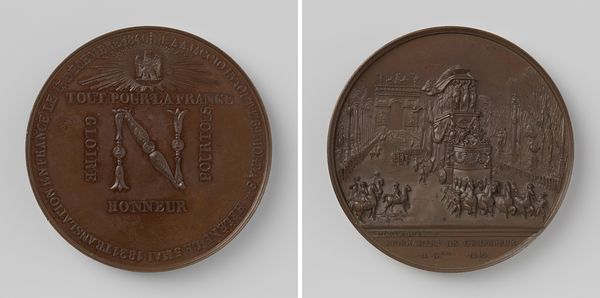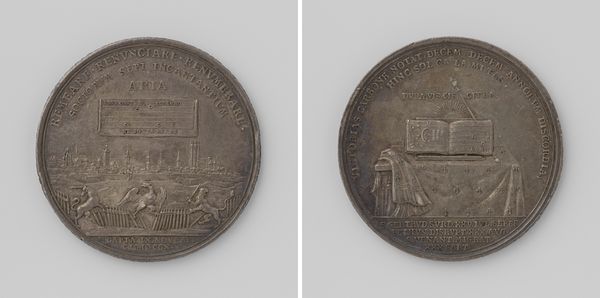
Vijftigjarig bestaan van de Maatschappij tot Exploitatie van Staatsspoorwegen 1913
0:00
0:00
relief, bronze, sculpture
#
natural stone pattern
#
antique finish
#
relief
#
old engraving style
#
landscape
#
bronze
#
sculpture
#
modernism
Copyright: Rijks Museum: Open Domain
Curator: The weight of history often rests on objects like this bronze relief, "Vijftigjarig bestaan van de Maatschappij tot Exploitatie van Staatsspoorwegen," commemorating fifty years of the Dutch national railway company in 1913 by Johannes Cornelis Wienecke. Editor: It feels… almost celebratory, but in a very stoic, industrial way. Like progress memorialized. What connections do you see between this commemorative piece and broader narratives about industry or technology at this time? Curator: Exactly! Consider the year, 1913, on the cusp of World War I. This object is more than a celebration; it's a claim about national identity inextricably linked to technological advancement and industrial strength. This "progress" needs to be viewed critically. Who benefitted, and who was marginalized by this railway expansion? Who laid the tracks? Who were displaced? Editor: So, you're saying the medal isn't just about the railway's success, but also raises questions about labor and displacement? Curator: Precisely. Think about the visual language: the imposing locomotive, the strong lines of the station. These images promote a specific narrative of modernity, of progress…a masculine ideal of power, maybe, but one that potentially hides exploitation. How might we connect this image of industrial advancement to the larger discourse surrounding colonialism and the exploitation of resources and labor during this era? Editor: That's something to think about. I initially just saw a train, but now I see how an image can represent really complex societal power dynamics. Curator: And consider the material itself. Bronze is not chosen at random; its value is about durability, permanence, as is its allusion to classicism, to endurance and established hierarchies. The landscape element grounds it, but the industrial aesthetic overrides nature. Now how can we disrupt this somewhat heroic image? Editor: This has completely shifted my perspective! I realize there is always a narrative underneath the art object itself, that as historians and researchers, we should always be thinking critically about this kind of memorializing. Thank you! Curator: My pleasure. That kind of active, critical questioning is so important.
Comments
No comments
Be the first to comment and join the conversation on the ultimate creative platform.


